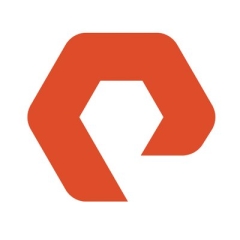What is our primary use case?
We primarily use the solution for storage.
What is most valuable?
The administration is very easy and quite minimal.
The performance is very good.
The installation is pretty straightforward.
Technical support is good.
What needs improvement?
Beyond a certain amount of petabytes, you have to have a separate system. Basically, it's not infinitely scalable.
For how long have I used the solution?
We've been using the solution in two places. We have used it in Washington for six months and London for six months as well.
What do I think about the stability of the solution?
We have found the solution to be stable. We've not had any performance issues and not have any stability issues with it. The performance is good. there are no bugs or glitches. It doesn't crash or freeze. It's reliable.
What do I think about the scalability of the solution?
The solution is scalable to an extent. Its deduplication ratio is quite good. You don't actually always need the full amount of physical storage, as opposed to the deduplicating amount of space.
Its scalability beyond a certain amount of petabytes makes it so that it is a separate system if you scale to that much storage. If you're a normal enterprise where you don't scale that much, it's fine. The X90 goes beyond a certain amount, and you have to have a new system that works as a separate system.
Across two locations, we have about 800 people.
How are customer service and technical support?
From the feedback I've gotten, for the most part, the technical support has been quite good. They know their product quite well and they've been quite responsive. We are satisfied with the support.
Which solution did I use previously and why did I switch?
We previously used EMC VNX.
How was the initial setup?
The solution is pretty straightforward. It's not too complex or difficult.
I haven't personally deployed it, however, from the team's feedback, they had very little issues with regards to the deployment and bringing it up and then setting up. The deployment was within days or a week at a maximum. That was for the migration time. For migrating from the old storage to new, it might take a while, however, in terms of getting it up and running, it was days. It didn't take that long at all.
It's easy enough that the normal system administrators can take care of the storage. There's no one dedicated to managing the storage and it's not that complicated that it needs someone dedicated just to manage it all.
What's my experience with pricing, setup cost, and licensing?
You do have a license that is required and you also have to pay for support.
The license we have is not a monthly subscription model.
Which other solutions did I evaluate?
For London and Washington, we had EMC VNX. At the time we were transitioning from the EMC to a mid-tier flash storage, and they didn't have anything in the market. We did look at others. We looked at the Nimble from HPE. When we were looking to purchase, EMC just came out with EMC FlashSystem. We didn't get to the IBM FlashSystem.
What other advice do I have?
We're a customer and an end-user.
We are using the latest version of the solution at this time.
I'd rate the solution at a nine out of ten.
I would recommend the solution to other users and companies.
Which deployment model are you using for this solution?
On-premises
Disclosure: I am a real user, and this review is based on my own experience and opinions.













